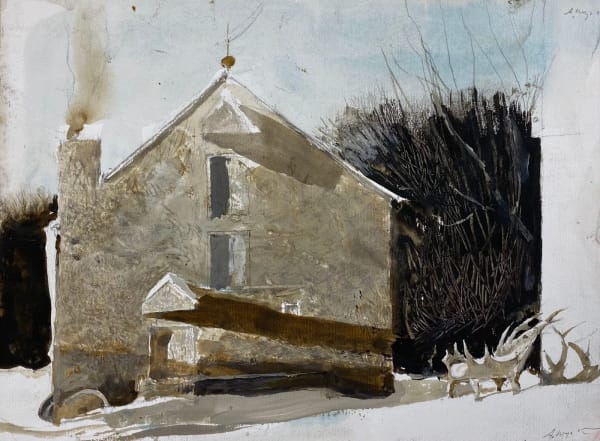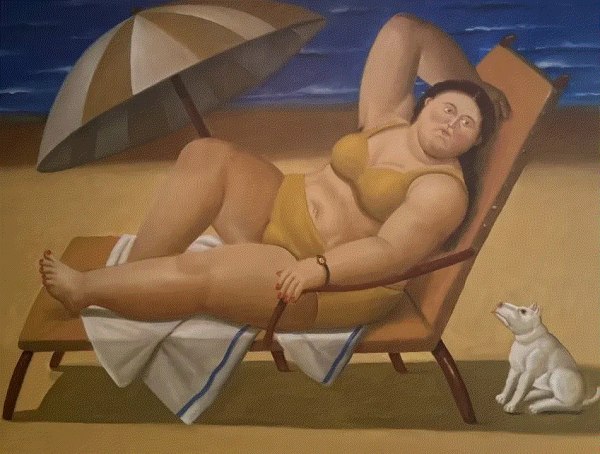Andrew Wyeth
“Pa kept me almost in a jail, just kept me to himself in my own world, and he wouldn’t let anyone in on it. I was almost made to stay in Sherwood Forest with Maid Marion and the Rebels.”
— Andrew Wyeth
Early Life
“Pa kept me almost in a jail,” Wyeth said, “just kept me to himself in my own world, and he wouldn’t let anyone in on it. I was almost made to stay in Sherwood Forest with Maid Marion and the Rebels.” In 1945, N.C. Wyeth was killed, along with his four-year-old grandson, when the car he was driving stalled on a railroad track and was hit by a train.
Career and Family Life
Because he stayed close to home, the focus of Wyeth’s work was of nearby farms and neighbors. Wyeth had his first solo exhibit at the MacBeth Gallery in New York in 1937, when he was just 20 years old. The show, which included many of his early watercolors, sold out on opening night.
In 1940, Wyeth married Betsy James, who managed the business side of his work. The couple had two sons. Their oldest son, Nicholas Wyeth, is an art dealer. Son, Jamie Wyeth, is a painter. In 1948, Wyeth did a painting of his neighbor, Christina Olsen, who was crippled by polio, unable to walk and refused to use a wheelchair. MoMA bought Christina’s World from the MacBeth Gallery, in 1949, for $1,800.
The public loved it, critics did not, accusing Wyeth of being more of an illustrator than artist. Despite the critics, the painting brought Wyeth popular acclaim. “I was at the Museum of Modern Art recently and there was a crowd around Christina’s World” Wyeth’s son, Jamie, said in a Saturday Evening Post interview. “The museum hates it. They hang it in a hall. But the guards will tell you the two most asked questions at the museum are ‘Where’s the men’s room?’ and ‘Where is “Christina’s World?”
Wyeth was on the cover of TIME Magazine in 1963. His work made the cover of TIME again, in 1986, accompanied by a tabloid-type story of the secret paintings he had done of his neighbor. For nearly fifteen years, beginning in 1971, Wyeth did paintings of neighbor, Helga Testorf, without the knowledge of Tester’s husband or Wyeth’s wife. In the 1980s, Wyeth’s work was in such demand, that collectors in Japan were paying more than $1 million for a single work. Wyeth died in 2009, at this home in Chadds Ford, at the age of 91.
Legacy
Andrew Wyeth has left a body of work that is very American in feel and scope. His works can be found in the permanent collections of major museums and galleries around the world. In 1963, he became the first painter to receive the Presidential Medal of Freedom and was awarded the National Medal of Arts in 2007. The Kuerner Farm and the home of Christina Olsen, which were often the subjects of Wyeth’s works, have been designated National Historic landmarks.
Send me more information on Andrew Wyeth
-

Andrew Wyeth: Antler Chair
Deborah Kass: OY/YO February 21, 2025I prefer winter and fall, when you feel the bone structure of the landscape. Something waits beneath it; the whole story doesn't show. - Andrew...Read more -

Works by Fernando Botero at Surovek Gallery
Paper and Light: Masterworks on Paper November 1, 2024My popularity has to do with the divorce between modern art, where everything is obscure, and the viewer who often feels he needs a professor...Read more -

Three Generations of Wyeths
October 26, 2023I surrendered to a world of my imagination, reenacting all those wonderful tales my father would read aloud to me. I became a very active...Read more -

Recent Acquisitions at Surovek Gallery
Works by Frederic Edwin Church, Andrew Wyeth, Frank Stella, Roy Lichtenstein and Tom Wesselmann October 5, 2023Frederic Edwin Church (1826-1900) was an important artist of the Hudson River School. Church was a master at depicting the luminous quality of natural light...Read more






